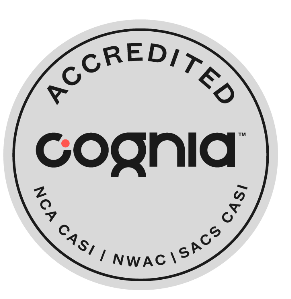POLICY NUMBER:
500.31
ADOPTED:
5.7.2019
Board Policy
- The Board of Education is committed to compliance with all state and federal laws regarding enrollment and admission of students in District schools.
- The Board believes that children and youths experiencing homelessness and refugees should have access to the same free, appropriate public education, as provided to other children and youths.
- The Board recognizes the need to provide requirements for both resident and non-residents students for admission, including transfer students, and students experiencing homeless and/or unaccompanied youth.
- The Board authorizes the Superintendent and District Administration to develop administrative regulations consistent with this policy, subject to review and approval by the Board.
ADMINISTRATIVE REGULATION:
500.31-1
APPROVED:
5.7.2019
Definitions - 500.31-1
For this policy, the following definitions apply:
- The term “homeless children and youths”: means individuals who lack a fixed, regular, and adequate nighttime residence; and includes –
- children and youths who are sharing the housing of other persons due to loss of housing, economic hardship, or a similar reason; are living in motels, hotels, trailer parks, or camping grounds due to the lack of alternative adequate accommodations; are living in emergency or transitional shelters; are abandoned in hospitals;
- children and youths who have a primary nighttime residence that is a public or private place not designed for or ordinarily used as a regular sleeping accommodation for human beings (within the meaning of section 103(a)(2)(C));
- children and youths who are living in cars, parks, public spaces, abandoned buildings, substandard housing, bus or train stations, or similar settings; and
- migratory children (as such term is defined in section 1309 of the Elementary and Secondary Education Act of 1965) who qualify as homeless for the purposes of this subtitle because the children are living in circumstances described in clauses (1.1) through (1.3).
- “comparable services”: each homeless child or youth shall be provided services comparable to services offered to other students in the school, including the following:
- transportation services;
- educational services for which the child or youth meets eligibility criteria, such as services provided until Title I; educational programs for children with disabilities, and educational programs for English learners;
- programs in career and technical education;
- programs for gifted and talented students; and
- school nutrition programs.
- “refugee”: any person who is outside any country of such person’s nationality or, in the case of a person having no nationality, is outside any country in which such person last habitually resided, and who is unable or unwilling to return to, and is unable or unwilling to avail himself or herself of the protection of, that country because of persecution or a well-founded fear of persecution on account of race, religion, nationality, membership in a particular social group, or political opinion.
- “unaccompanied youth”: includes a homeless child or youth not in the physical custody of a parent or guardian.
- “school of origin”: means the school that a child or youth attended when permanently housed or the school in which the child or youth was last enrolled, including a preschool.
- District “homeless liaison” for homeless children and youths: The local education agency (District) will designate an appropriate staff person (the homeless liaison) to carry out and perform the duties of the State plan for education of homeless children and youths within the District. The homeless liaison is responsible to oversee that:
- homeless children and youths are identified by school personnel through outreach and coordination activities with other entities and agencies;
- homeless children and youths are enrolled in, and have a full and equal opportunity to succeed in, schools of that local educational agency; homeless families and homeless children and youths have access to and receive educational services for which such families, children, and youths are eligible, including services through Head Start programs (including Early Head Start programs) under the Head Start Act (42 U.S.C. 9831 et seq.), early intervention services under part C of the Individuals with Disabilities Education Act (20 U.S.C. 1431 et seq.), and other preschool programs administered by the local educational agency;
- homeless families and homeless children and youths receive referrals to health care services, dental services, mental health and substance abuse services, housing services, and other appropriate services; the parents or guardians of homeless children and youths are informed of the educational and related opportunities available to their children and are provided with meaningful opportunities to participate in the education of their children;
- public notice of the educational rights of homeless children and youths is disseminated in locations frequented by parents or guardians of such children and youths, and unaccompanied youths, including schools, shelters, public libraries, and soup kitchens, in a manner and form understandable to the parents and guardians of homeless children and youths, and unaccompanied youths;
- enrollment disputes;
- the parent or guardian of a homeless child or youth, and any unaccompanied youth, is fully informed of all transportation services, including transportation to the school of origin;
- school personnel providing services under this part receive professional development and other support; and
- unaccompanied youths—are enrolled in school; have opportunities to meet the same challenging State academic standards as the State establishes for other children and youth; and
- that the youths may obtain assistance from the local educational agency liaison to receive verification of such status for purposes of the Free Application for Federal Student Aid described in section 1090 of title 20. (See, U.S.C., 11432 (g)(6)(A)).
ADMINISTRATIVE REGULATION:
500.31-2
APPROVED:
5.7.2019
Compliance Efforts for Homeless or unaccompanied youths - 500.31-2
Pursuant to state and federal law, homeless students are entitled to immediate enrollment and full participation in school, even if they are unable to produce records normally required for enrollment, such as previous academic records, medical records, birth certificate, immunization or other required documents.
If the child or youth needs to obtain immunizations or other required health records (birth certificates), the enrolling school shall immediately refer the parent or guardian of the child or youth, or (in the case of an unaccompanied youth) the youth, to the homesless liaison who shall assist in obtaining necessary documents or other required health records.
- A homeless child or unaccompanied youth must:
- be allowed to continue in their school of origin;
- be allowed to enroll in the school in whose boundaries the child actually resides;
- be enrolled immediately with the expectation that the child shall begin attending immediately;
- be provided transportation support to the child’s school of origin; and
- be eligible for comparable services.
- Determination of residence for homeless or unaccompanied youth may include consideration of the following criteria:
- the place, however temporary, where the student actually sleeps;
- the place where the student keeps his/her belongings; and/or
- the place which there the student considers to be home.
- Determination of residence for such students may not be based upon:
- rent or lease receipts for an apartment or home;
- the existence or absence of a permanent address; or
- a required length of residence in a given location.
- Enrollment Dispute Resolution Process: Any dispute involving school selection or enrollment of a homeless child or an unaccompanied youth shall be referred to the District’s homeless liaison. However, a child or youth must be immediately enrolled in the school in whish enrollment is sought pending resolution of the dispute, including available appeals.
- the parent, legal guardian, or unaccompanied youth must be provided a written explanation of the school’s decision regarding selection or enrollment, including the rights of the parent, legal guardian or youth to appeal the decision.
- if the parent, legal guardian or unaccompanied youth appeals the decision, the District’s homeless liaison shall be notified.
- the District’s homeless liaison has responsibility to ensure the dispute resolution process is conducted as expeditiously as possible.
- The district homeless liaison will notify the Superintendent’s designee who will convene an appeal committee comprised of three persons appointed by the Superintendent’s designee.
- The appeals committee will hear the dispute, render a decision which will be provided to appellant.
- The parent, legal guardian or unaccompanied youth may also appeal to the State Superintendent of Public Instruction.
- Credit Accrual: Recognizing students experience homelessness experience high mobility and unique challenges to credit accrual, consistent with federal law, the District will work to remove barriers to enrollment and retention.
- The homeless liaison will work with students to discuss student factors that directly impact factors for academic success.
- The District may develop strategies to remove barriers that prevent youths from receiving appropriate credit for full or partial coursework satisfactorily completed while attending a prior school, in accordance with State and District policies.
- District homeless liaison for children and youths:
- District training and awareness: The District’s homeless liaison is responsible to raise awareness of school personnel and service providers of the effects of short-term stays in a shelter and other challenges associated with homelessness.
- Student record privacy for homeless children and youths;
- Information about a homeless child’s or youth’s living situation shall be treated as a student education record, and shall not be deemed to be directory information.
- A District may require a parent or legal guardian of a homeless child or youth to submit contact information.
Exhibits
None
Forms
- Housing Questionnaire
- McKinney-Vento Enrollment Dispute Form
Document History
Adopted – 5.7.2019.
This online presentation is an electronic representation of the Canyons School District’s currently adopted policy manual. It does not reflect updating activities in progress. The official, authoritative manual is available for inspection in the office of the Superintendent located at 9361 South 300 East Sandy, UT 84070.


